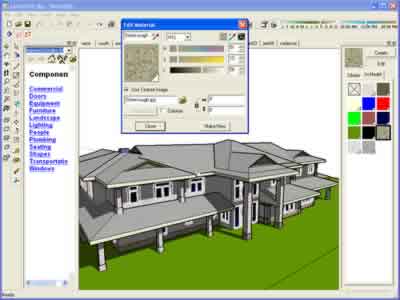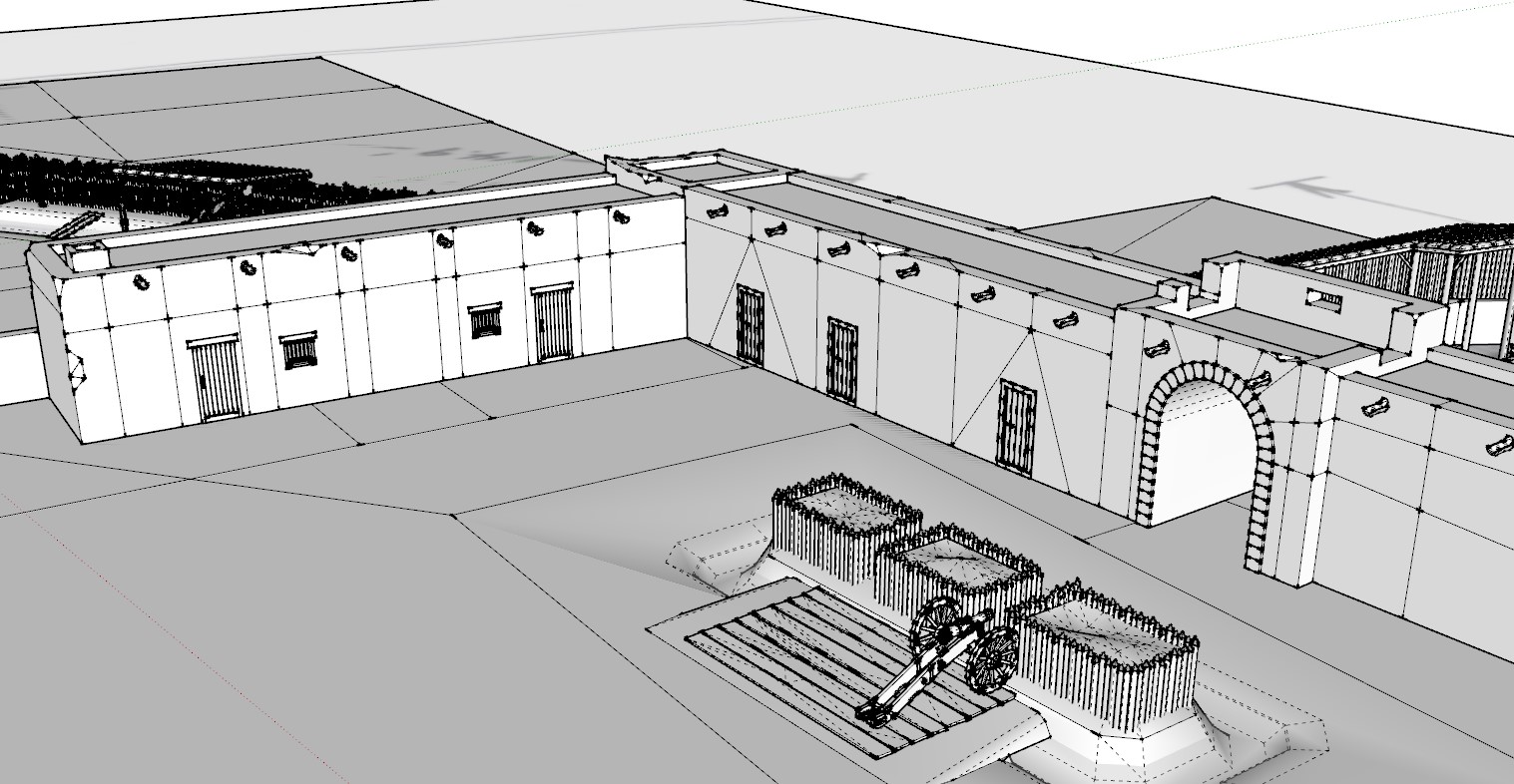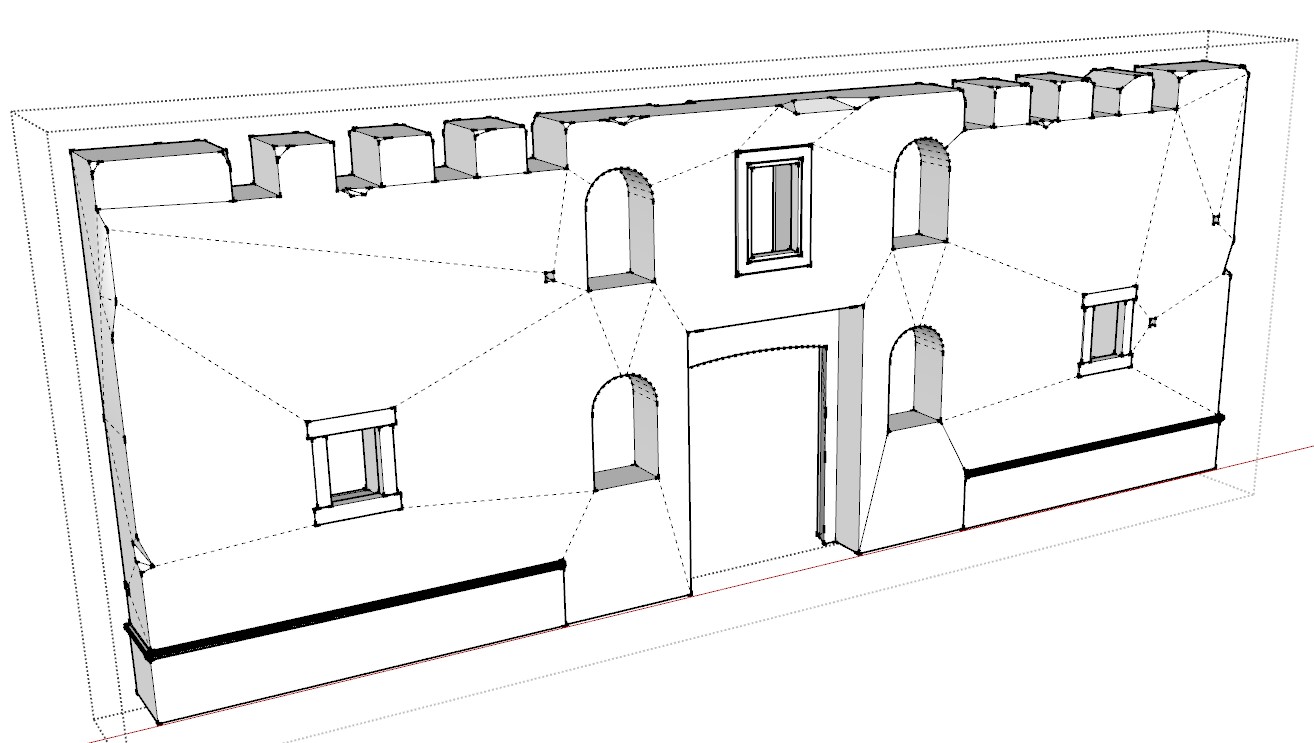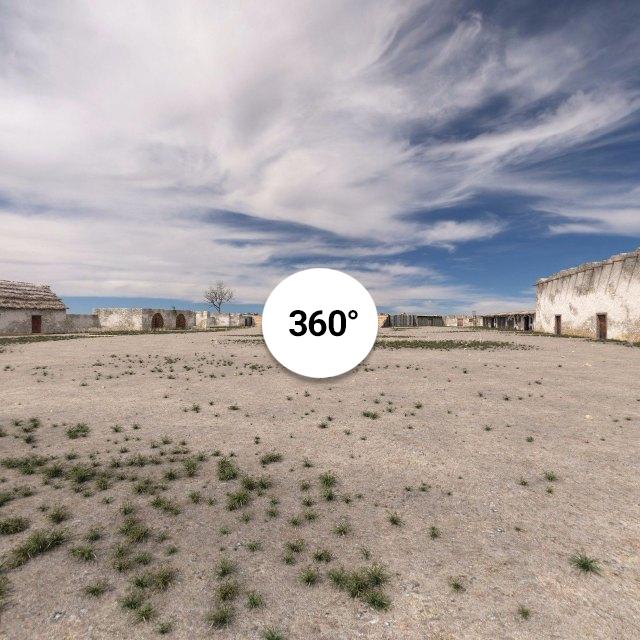I have both Vive and Rift and I prefer the Vive. Room scale has a lot to do with it. I use Unity to do walkthroughs.
Posts
-
RE: HTC Vive
-
RE: SketchUp to Blender observations
@pbacot said:
Curious. While you're looking, why don't people consider Rhino? Haven't tried it but it sounds like another good solution.
Rhino and MoI3D (made by the same guy who created the first versions of Rhino) are NURBS modelers, and as such are significantly DIFFERENT in HOW they build models. They are much more "CAD-like" than SketchUp, and are not easily used as a sketching tool. Furthermore, they don't create nicely formed meshes (for games or photo-rendering) as well as SketchUp or other polygon modelers.
They are better than SketchUp for 3D printing and creating "solid" objects. They typically have better filleting and boolean tools, but lack in the ability to "move vertices" around, which is something poly modelers do with ease.
-
RE: SketchUp to Blender observations
@pilou said:
Hello Chipp
Have you seen that free thing SU like ?
https://www.bricsys.com/en-intl/shape/Hi Frenchy,
Yes I did take a look at it based on your post over in MoI (thanks!). Currently it doesn't look as powerful as SU with all it's plugins. -
SketchUp to Blender observations
Hey folks. I've been wanting to try out Blender for some time now, esp based on the revelation SU is going to the cloud, which means I don't expect much in the way of modeling features to be improved upon anytime soon. I feel we're pretty much at a dead end feature wise for the as things I'm concerned with: UV mapping, decent filleting, GPU support for realtime renders, and a host of other modeling fixes and tools (booleans being one of them). Not to mention some standard features now found on just about every other modeling package like modifiers, lack of a no-snap mode, real splines, etc..
Don't get me wrong, I'm very happy with the support of the plugin devs, but how much can be asked of them when it all moves to Javascript and the cloud?
So, my good friend Jerry Perkins and I are doing a series of tutes where I pose a modeling question to him and how I would solve it in SU and ask him to do the same in Blender. There are a ton of really good tutes out there on how to get started with Blender, but I find a lack of vids telling one how to "think" in Blender w/regard to modeling strategies.
As most of you know, modeling in SU is quite a different (and fun) experience compared to other programs. I also work in MoI3D, and it also take a complete mind shift going from SU to it. So, I hope this video, even though the audio and format is somewhat poor, can help some of you as much as it does me...
-
RE: SketchUp 2018
OK, I now understand there is a focus on trying to get extensions to work in the cloud sometime in the future. I suppose we can expect the whole app (PRO + FREE) to end up in the cloud at some point. If not, then this truly is a waste of valuable developer resources.
Pros
- Eventually when SU Pro goes to the cloud, we’re back to one code base set.
- Nothing to download (except I suspect there will need to be a ‘cached’ app somewhere so when you’re not connected to the cloud you can still do work like GApps.)
- Easy to update all at once.
- Can perhaps run on slower machines as most heavy processing can be done in the cloud (aka OnShape).
- If prefs ever get implemented, it will be nice to have them stored online for all computers.
- No license per computer and no dreaded licensing conundrum Trimble has put us through year after year.
- Makes the Google Chromebooks team happy!
Cons
- Not pipeline or ecosystem friendly. If you can’t quickly save and open the program in a different app. In fact I’m not even sure how to actually download the file. If it’s not as simple as SAVE to FOLDER then it’s a fail for working in any sort of workflow, pipeline or other ecosystem. And because there is no renderer, no animator and other missing items, it’s necessary to go to 3rd parties to get things done.
- By focussing on the cloud, valuable resources are usurped which could be used to actually add some new and needed features. Those resources are now focussed on making the proper frameworks, trying to get existing extensions to play, client-side code, and the whole cloud architecture, among other things.
- Takes a long time to put everything in place-- and meanwhile SketchUp core features keeps getting further and further behind. SU2018 is such an example. It’s more than clear all the dev resources are now focused on the cloud as this is the lamest update I can ever remember.
- Sometimes instant updates create serious problems and if not adequately tested can be very problematic for professionals on a schedule. I hope you consider the ability for customers to roll back to previous versions.
So, instead of finally getting a fillet or chamfer command, or UV mapping (after all it is 2017), or better booleans, or even a decent renderer, we are now watching the programmers spend all their time on trying to figure out load balancing on servers and how to get around the limitations of different browsers.
I sure would’ve like to have been in THAT meeting where the decision was made to allocate major development resources to move the whole codebase to the cloud. Perhaps the decision was made by programmers knowing they need to add significant cloud development capabilities to their resume?
It is more and more apparent to me there is little focus at Trimble on what users need to actually model and render buildings, products, and 3D prints in 2018. There have been very few tools added over the past decade. Yes, I know we all EXPECT the plugin developers to create them for Trimble. Still, even the magnificent Fredo can’t easily build the standard filleting tool every other poly modeler has because of the internal architecture of SU.
Here’s what SketchUp 2 looked like in 2003. Mostly all the same tools. That was 15 years ago!

Yes, I know the original design was a departure from standard vertex poly modelers…and a good one at that. Even so, there are so many ways to make it better. Trimble seems very reluctant to actually add the necessary features, and instead they’ve decided to now spend significant resources towards isolating the program, and it’s users, in the cloud. I’m just wondering if the programmers are actual 3D guys, or former Google Cloud computing developers?
-
SketchUp and AR Kit
Here's a pretty cool video of a test in Unity. It's a portal into the room Jim Bowie died in 1836 at the battle of the Alamo. It's only a test at this time, as we will add a lot more to it, including a 3D model of Bowie in bed (he was sick at the time). Everything was modeled in SketchUp, UV Mapped in 3D Coat and textured in Unity in a single sitting. Fun stuff.
Hope you like it.
-
RE: Alamo VR/AR project
Hey guys, I'm going to continue posting on this project at http://www.alamoreality.com/blog.html and close this thread. Any really interesting stuff, I'll post in the main forum.
-
RE: Center on Origin but drop to floor?
Thanks! That does the trick

-
Center on Origin but drop to floor?
Does anyone know of a plugin that can center an object on the XY origin but set it on the ground (the bottom of the bounding box is at Z=0).
Seems like it would be most useful. I know I can use Center on Origin plugin, then lift the component/group, then create a ground plane below, then DropGC, but it would be nice to do it all at once. Thanks for any help!
-
RE: Lumion 8 is just amazing!!
Damn impressive. Especially the PEOPLE! Anyone know how those people are created? Stunning. Pete, I await you review!
-
RE: Viz Pro Parametric Modeling
Yes, you can move from MoI to SketchUp-- not so easy the other way.
MoI, as a solid modeler, is best for hard surface 3D print models (not so good for something like character design). Thomthom's SOLID INSPECTOR is quite helpful for solids in SketchUp, but that said, generally speaking solids are a PITA in poly modelers. I've used 3D Coat to voxelize poly models and then you have a great solid, plus it's quick. HTH. -
RE: Viz Pro Parametric Modeling
The editor is a plugin for MoI. MoI has a VERY ACTIVE community, with the owner/programmer answering any questions you have in the forum. It's hugely more easy to use than any other solids modelers and has one of the best if not the best NURBS to POLYS converter I've ever seen.
4 will be beta any day now, but you have to own 3 to be able to download it. It will probably take a year to go golden, so you're best off just purchasing 3 now.
It's a stunning app, perfect for solid design and concepts. IMO, one needs both a poly modeler AND a NURBS modeler (and a topology modeler). I still enjoy using both SketchUp and MoI and go between them often. I also really like 3D Coat for topology.
You won't go wrong trying MoI. It's that good.
-
RE: Alamo VR/AR project
Here are a couple new videos showing my workflow going from SketchUp to Unity. This first video deals with the very simple way 3D Coat creates great UV Maps for models exported from SketchUp.
The second video focuses on creating solid voxel representations of SketchUp models, then adding severe aging and effects in order to create a more complex model appearance while still minimizing model complexity. Once the voxel model is created in 3D Coat, it is then passed on to Substance Painter where it is used to bake normals and ambient occlusion maps on the simple UV model created in the first video. It ends showing how a shader in Unity can be used to minimize the amount of textures and polygons, yet generate sufficient results to be able to be used on mobile devices.
The second video is an hour long, which is typically long for instructional media. I've sped it up where I can. There are valuable points to be made all along the way and I hope you find it worthwhile.
-
RE: Sketchup causing n-gon triangulation when imported to UE4
Different triangulation plugins can work, but you still get problems.
You should consider manually creating 'guides' in your models to provide triangulation 'hints' for your model. Take this part of the alamo model I'm doing. You can see how the lines in the faces help with the triangulation.

You can of course use the eraser tool and ctrl-click (PC, not sure Mac) to 'hide' the lines and they will still work as shown:

FWIW, the fastest triangulation plugin I've found is the SketchUV plugin triangulator.
-
RE: Alamo VR/AR project
Unity 2017 and Timeline being used for scripting some AI encounters. Thanks. I'll post more soon.
-
RE: Alamo VR/AR project
Some updates. I'm finishing the architecture, though more slowly than I originally intended. Brought on a few new people, including Brad (motion animator) and some other helpful Alamo experts:
James Boddie
Jim is a superb Blender modeler and render and has created various Alamo scenes with INCREDIBLE realism. His 360 view is JUST AMAZING! We're looking to have him help with some of the modeling for the Witte project.
The Alamo Plaza as it might have appeared in 1836. The point...
The Alamo Plaza as it might have appeared in 1836. The point of view is about 17 yards from the southwest corner of the Long Barrack (Convento). Just to the right of the Alamo church you can just see the palisade over the low stone wall. The cottonwoods of the Alameda are visible beyond the palisade. To the right of the low stone wall is the kitchen which abuts the Low Barrack and main gate. The 18-pounder cannon is on the platform at the southwest corner. Next to it on the west wall is the blacksmith shop. The Treviño House (Travis’ headquarters) is the thatched-roof building in the middle of the west wall. The defense of the north wall consists of two substantial cannon platforms. Continue to see the north row houses, granary and convento. This 3D model of the Alamo compound is based on: Mark Lemon's The Illustrated Alamo 1836, A Photographic Journey. Abilene: State House Press, 2008. Rendered in Blender. -#Alamo -#Blender
Kuula (kuula.co)
Check out his main plaza parade, done with Houdini:
https://youtu.be/l6gl0b2-f7cAnother incredible view:
https://youtu.be/OMm9_zsjOxkRich Curilla
Rich is a noted Alamo and Bexar expert who has created some very nice SketchUp visualizations of San Antonio during the time of the Alamo siege.His FB page:
https://www.facebook.com/richard.curilla.5And a nice article on his curation of the John Wayne Alamo set:
https://www.southbendtribune.com/life/travel/as-it-deteriorates-alamo-set-could-be-forgotten/article_e3304551-9874-56cf-bf3c-6f917d71b27d.htmlHere's some test animation work. Obviously not complete, but interesting.
-
Best way to scale about a given point?
Most programs allow you to scale about a given point. The SU scale tool only allows you to scale from the middle or one of the 'edge' points. Anyone know a way to scale about a chosen point? I know I can scale then move, but was looking for something a bit more interactive.
Thanks!
-
RE: Alamo VR/AR project
More updates.
This is our first real AR test. It's a bit shaky as I'm trying to move a mouse and hold the camera at the same time. No baked textures yet-- still trying to figure out how to do that in Vuforia...
-
RE: Alamo VR/AR project
Some more updates. These are Unity screenshots from the Palisades scene, which is the place David Crockett and his men defended the Alamo from. It was supposed to be one of the most vulnerable, but due to Crockett and his sharp shooters, became virtually impenetrable.
Ultra low geometry except for the Alamo, which will be optimized next...
Also, we'll be adding a better ground texture as well.Of interest, the shader I'm using was created in Amplify Shader for Unity and it's a pretty interesting shader. The goal is to NOT have too many texture maps for mobile AR. So, I've compiled 2 different shaders and the only custom maps per object are a normal and ambient occlusion map. The rest of the texturing is done with only a couple of diffuse and normal maps, plus a noise map for the dirt coming up from the ground. This way I can keep both the polys low AND the number of textures low.




